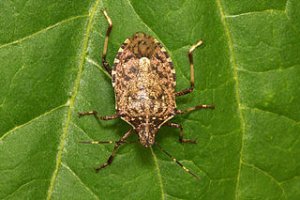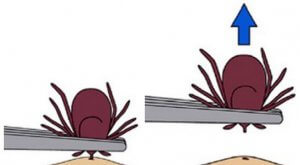|
Oops! You went for a walk in your neighborhood after dinner and accidentally brought home a hitchhiking tick. While this can be a scary experience, no need to panic. Most ticks don’t carry any diseases and the ones that do typically have to feed for an average of 36-48 hours before they can transmit any dangerous bacteria to you. Just make sure you remove the tick using proper tick removal techniques within the first 24 hours. What’s the proper technique to remove a tick? Well, we’re glad you asked!
Some tick removal techniques you may have read about on Pinterest or Facebook that involve painting the tick with nail polish, suffocating it with petroleum jelly or using a heat source like a match to burn the tick off your body are not recommended. The tweezer method is hands down the most common method for tick removal. It’s endorsed by the CDC (Center for Disease Control) for humans as well as the Humane Society and ASPCA (for pets). This process is not only simple but also safe and effect. Here’s what to do:
1. INVEST IN TWEEZERS. (DUH.)
Make sure you have a set of fine-tipped tweezers at home. Nothing fancy needed; however, this is kind of an essential here! 🙂
2. PULL BACK HAIR.
Stay calm as you pull any hair back from around the tick exposing the skin around the tick.
3. LOCATE THE HEAD.
Use the tweezers to grasp the head of the tick as closely to the skin as possible. Grabbing the tick’s body can increase the chance of injecting the tick’s blood into your skin. Once you have located the head, gently squeeze.
4. PULL STRAIGHT OUT.
Do not twist. Do not wiggle. Do not pass GO and collect $200. (Okay, I digress a bit but you get the point, right?) Pulling upward in a perfectly straight motion helps ensure that you fully remove the tick’s head rather than tearing its head off and leaving it lodged in your skin.
5. CLEAN UP.
No need to save the tick to show your doctor as ticks are very rarely tested for specific diseases. The tick can be flushed right down the toilet. Use soap and water to wash the tick bite and your hands.
6. FEVER OR RASH? CALL YOUR DOC!
If you develop a rash near the site where your tick bite was or start running a fever within a few weeks of your tick bite, a visit to your doctor might be in order.
Whew! Now that the tick is gone you’ll want to be sure you plan better before your next after dinner walk or hike. We know how hot St. Louis summers can get but dressing in long pants and long-sleeves with closed toe shoes make it much harder for ticks to find a way onto your body. Light colored clothes will not only help keep you cooler but (bonus!) they also make it easier to spot a tick that’s crawling on your clothes. If you’re on a wooded trail, stick to the center of the trail (rather than the sides) where you’re as far as possible from trees, grasses & plants where ticks may be hiding. Be sure to spray yourself with an insect repellent that contains at least 20 % DEET. (If this is a long walk, read the label to see if/when you need to reapply.) Don’t forget Fido! Once you get back home, be sure to not only check your clothes and body for ticks but also look through the fur of any 4-legged babies you have who might have joined you for that walk.
PS While designed for mosquitoes, our mosquito treatment program is also proven to be quite effective at controlling fleas & ticks. Learn more here. |












